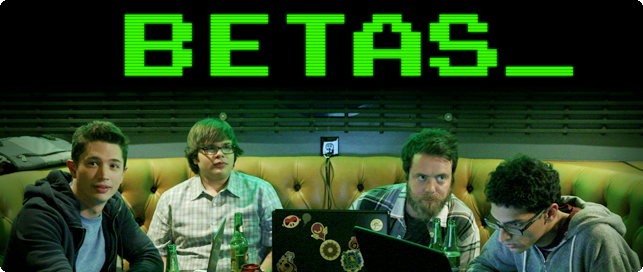When I saw an ad1 for Betas, Amazon’s original comedy series about a group of Silicon Valley millenials building the next disruptive dating app, my curiosity was piqued.
But after watching the first two episodes2, I have to say: Betas is completely unwatchable.
The first two episodes cover what you’d generally expect: character exposition, contrived situations serving to bring our protagonists together and establish our antagonists, the awkward setting of social/sexual tension and, of course, setting the story arc for the season: the trials and tribulations of building of a mobile application in a startup incubator.
Unfortunately, the execution is all too contrived: the characters, from the shy, quiet Indian wunder-engineer to the pretty, upstart early 20-something “CEO” who has just a touch of “Aspies” to the jamming-with-Moby venture capitalist aren’t particularly innovative. The “comedic” situations our stereotypes find themselves in aren’t inspired—posing as Larry Paige to crash a VC’s house party? Really?—nor is the character interplay or “tension”: at times, I feel like I’m watching an episode of Glee, except without the singing.
Or the diversity.
If, like me, you were hoping a show like this might tackle that particular issue our industry finds itself grappling with3, you’d be correct, though probably not from the angle you might have hoped.
Betas ticks all of the boxes off that checklist:
Sexism:
We’ve got free broad band, free snacks, and not to mention: those bangin’ ass hotties with the bargain hunting app. [Camera pans to a group of five women around a table; only one of them has a laptop.]
(Because obviously, women entrepreneurs’ most noteworthy trait is their “ass-banging’ness.”)
Oh, and the antagonist-team’s rival app? “Valet-me”: from the makers of “Tit-stare.”
Racism, check:
I’ve got a Bitcoin on Bollywood.
Uttered as the character raises a physical coin (Haha, get it? Currency!), referring to her Indian—red dot, not feather, a riff we hear in the same episode—teammate.
Drinking culture? Our VC has you covered there; his new incubator class is informed that at the kickoff party:
Remember: Intoxication is mandatory.
Everyone claps, of course.
Oh, and let us not forget ageism:
You know I’m 35; it’s like 95 in Valley Years…
Now I know this is a sitcom, and the point is to get a laugh. A lot of things were said that… were sort of questionable, but I didn’t bother noting them because other sitcoms have made equally tasteless jokes for an (equally) cheap laugh.
The most surprising thing about watching Betas is that I realized I was actually becoming frustrated and angry while watching it. It took me awhile to figure out why: Betas’ characters do a really good job of re-creating archetypes of our industry, so much so that they remind me of people I’ve met. But the problem is… none of those people are likable.
Co-creator Josh Stoddard said: “We were looking at this culture, and it is pretty easy to parody.” But this show really isn’t a parody, at least not in the sense IT Crowd or Hackers were. Those had characters that maybe frustrated us, but they were all likable in some way or another because they possessed certain aspects of ourselves that we could identify with.
I don’t identify with any of these characters. Nor do I want to. Heck, I wouldn’t even want to have coffee with them.
The other frustrating part is I couldn’t really figure out who this show was supposed to be for; I came up with two possibilities:
Read More



